
Keys and Descriptions For The Vascular Flora of Oklahoma.
What started out as a quick photo for a simple post turned into an afternoon of studying multiple taxonomic keys, distribution maps and pollination ecology.
Since I work in the border counties along the Red River in Oklahoma, my primary reference for plant identification is the Flora of North Central Texas (FNCT). It has good keys, illustrations and descriptions for everything. One of the problems though, when working along political boundaries is that some plants just don’t go into other states, or at least aren’t documented there. Being from Oklahoma, I can sort of understand why a plant wouldn’t want to be found in Texas. When I tried keying this mess, the FNCT wasn’t all that helpful - it only listed two species and I figured I had at least three. So I went to my secondary source, Keys and Descriptions For The Vascular Flora of Oklahoma. There I found four species which enabled me to sort out what I had collected, but still left some questions.
At this point I had one red species, one yellow species, and one species that could be red or yellow. That sort of thing suggests that something else is going on.
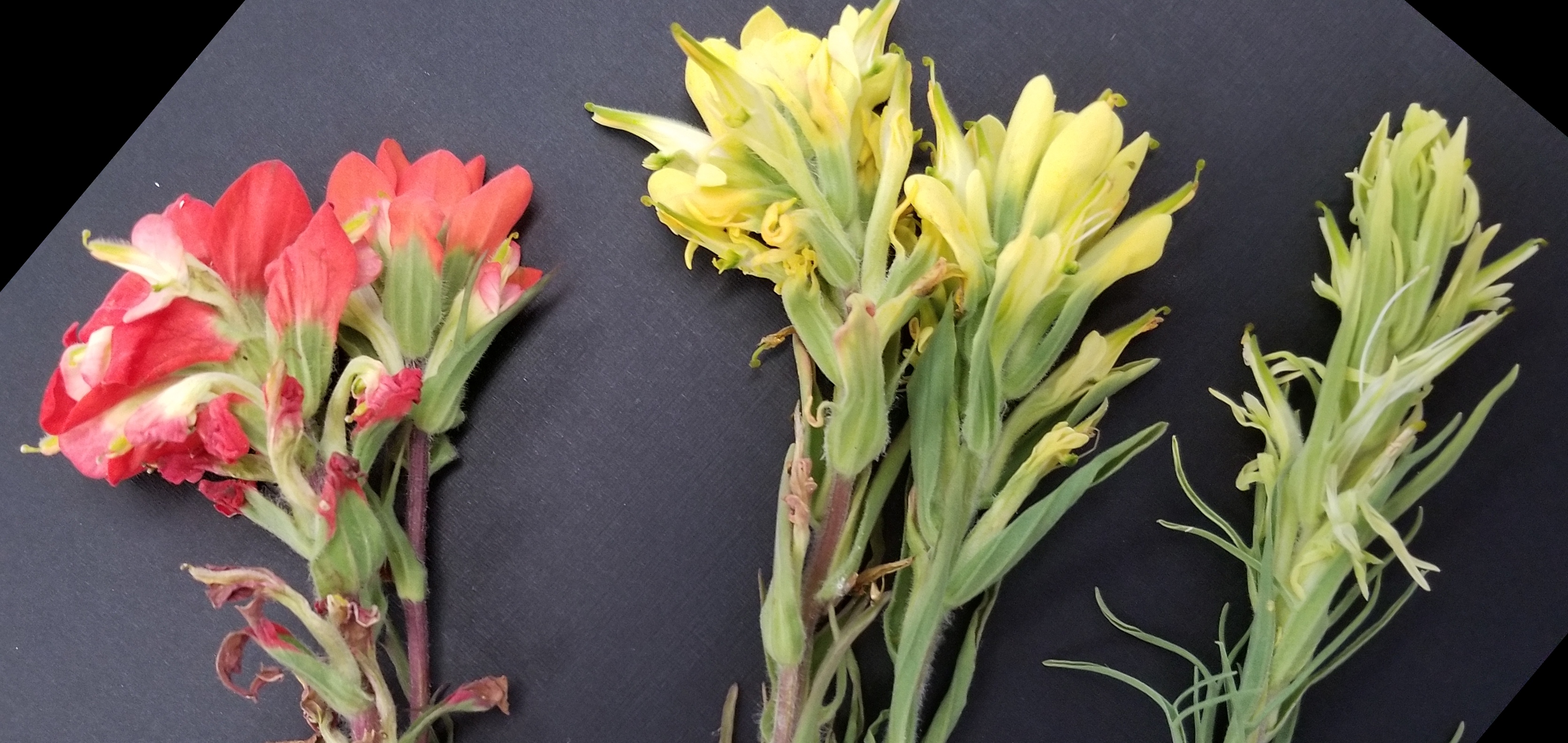
The red ones are C. coccinea and C. indivisa - Indian Paintbrush. The “fat” yellow one is C. coccinea - Scarlet Paintbrush (Yes, I know it’s not scarlet) Apparently there is some bract color polymorphism involved in the pollination ecology of this species.. The “skinny” yellow one is C. purpurea var. citrina - Lemon Paintbrush - even though the Latin name says it’s the “purple yellow” paintbrush.
Indian Paintbrush, C. indivisa, is the most common early in the season I think, with Scarlet Paintbrush, C. coccinea coming on a little later. C. coccinea seems capable of persisting until the fall rains and showing up again then. (One of them does, but I’m still not absolutely certain which.) Prairie Indian Paintbrush, C. purpurea var. citrina, is the slender yellow species that I stopped to photograph, and that led to going down this rabbit hole. Why a plant with a yellow flower has a name like purpurea makes more sense when you see a photo of C. purpurea var. purpurea - Downy Indian Paintbrush. I included a photo of it to help explain the issue.
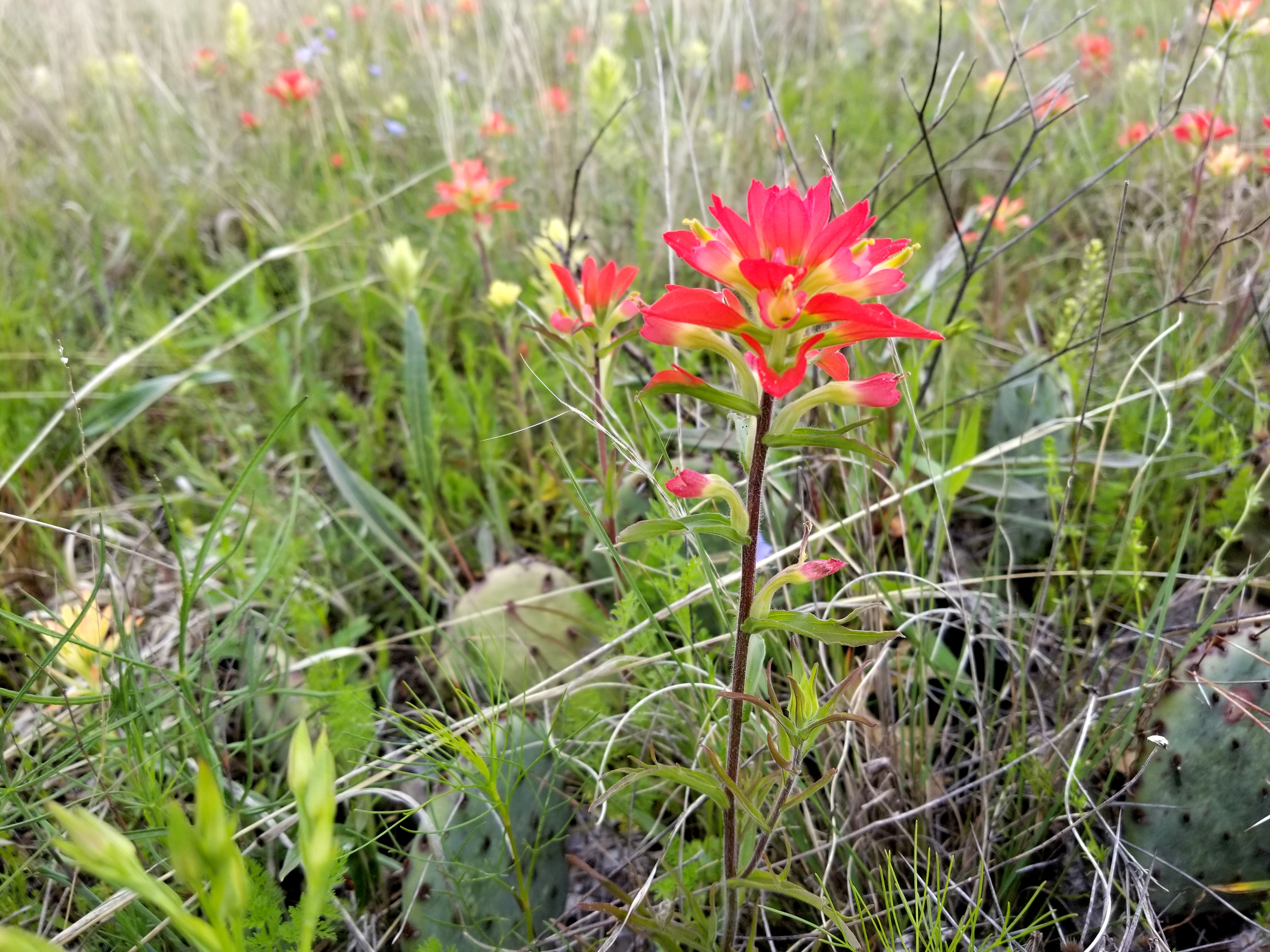
All of these species are hemiparasites. There were a few C. indivisa interspersed among the two yellow species but for the most part C. indivisa occurred lower on the slope in deeper soils. I couldn’t discern a preference between the yellow species - both were on the shallower soils.
Is this preference a matter of what C. indivisa prefers and the others don’t, or is it the fact that the preferred host plant prefers those soils? From what I’ve observed, C. indivisa doesn’t really care about soils.
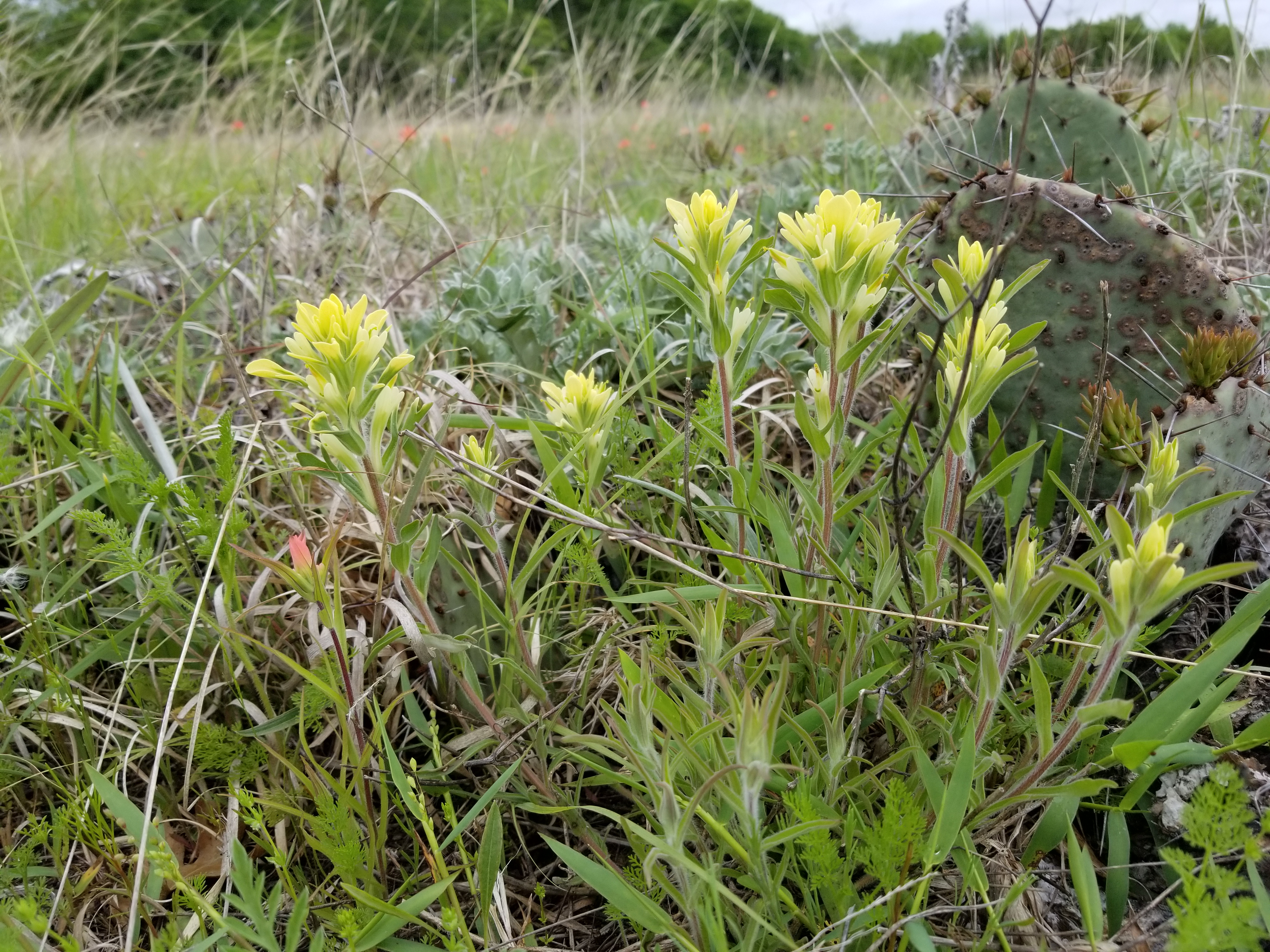
Then there is the grazing issue. Neither of the yellow species occur on the neighbor with the exception of a handful in a remote fence corner. Same habitat - same soils - same topography. C. indivisa does occur there though. Are the cattle grazing the yellow ones preferentially over C. indivisa? Are they influencing pollinators some how. Did they graze out the preferred host plants? It is probably related to overstocking because cattle have been on my side of the fence as well.


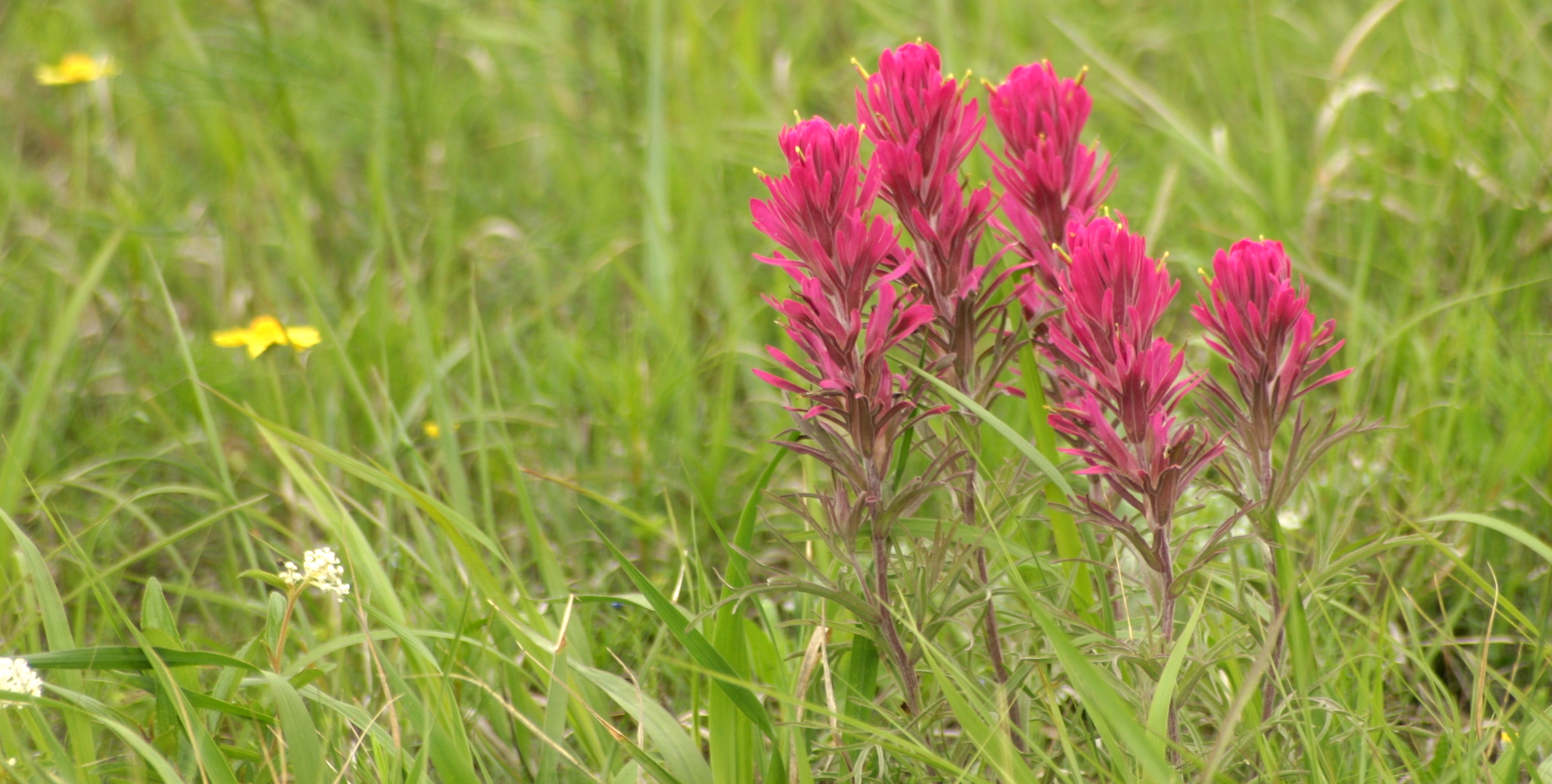
Just to complete the confusion I’ve included a “white” indivisa and a couple of “indecisive” individuals all from the same area.
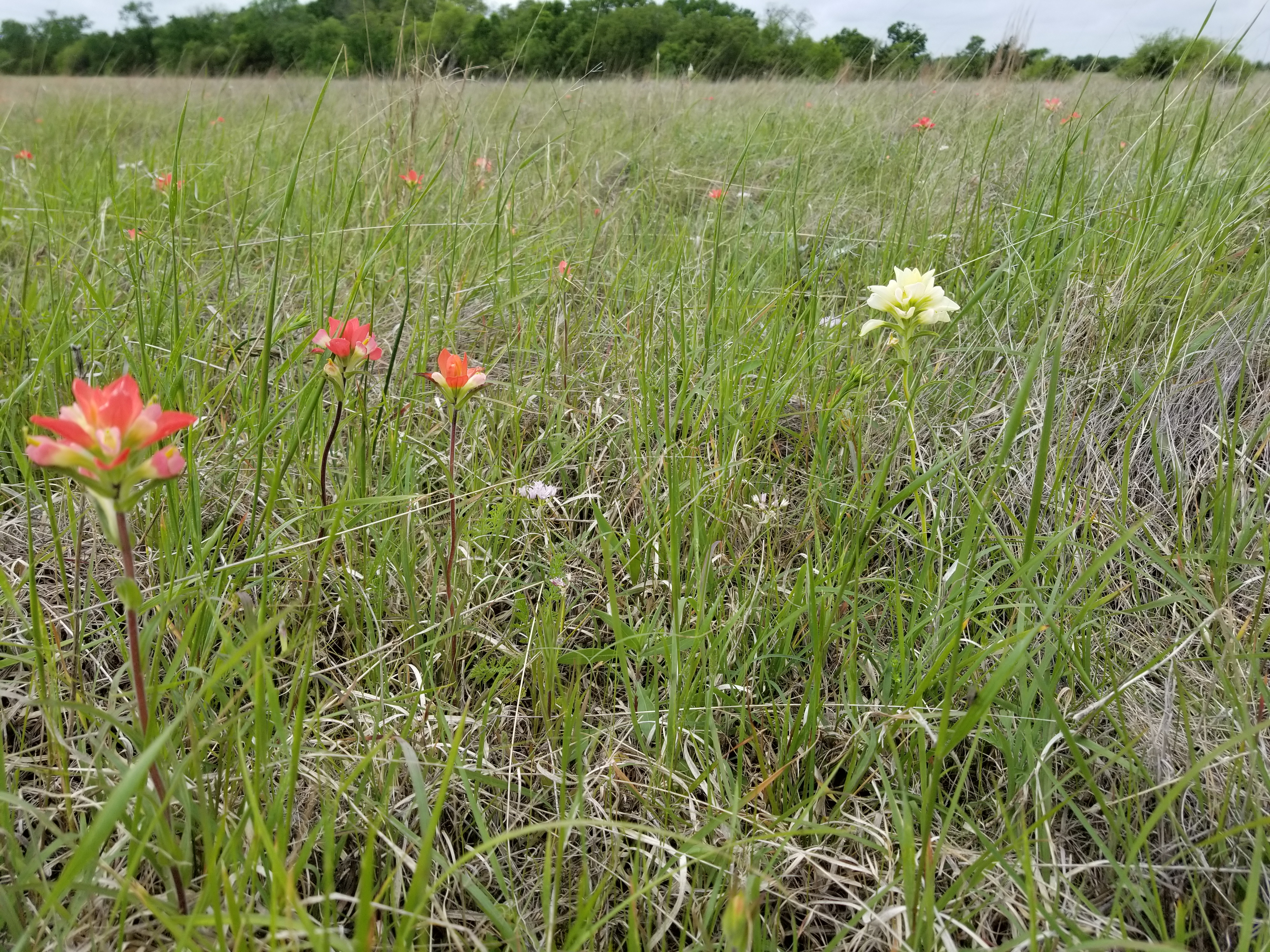

Make it all make sense!
Castilleja purpurea is trying to split into two species (and has been treated as such in the past). It just depends on who wrote the key as to whether they get lumped together in one species with two varieties or two distinct species. Exactly how much difference is necessary to declare one species distinct from another isn’t nearly as clear cut as most folks think. If they produce fertile offspring you could tell easily - taxonomic studies use dead plant specimens which tend not to produce a lot of offspring, so that isn’t a very useful distinction. In the field, both varieties are easy to distinguish. I’ve also never seen them growing together. The citrina variety has a more western distribution in Oklahoma, while the purpurea variety stays to the east.
The two color morphs of C. coccinea may have a different explanation. In the absence of pollinators, the yellow morph has greater seed set. Since pollinator abundance is a hard thing to predict for a plant, this mechanism may help to ensure that at least some seed gets produced each year.
What about those individuals of C. indivisa or C. coccinea that are intermediate in color? I suspect that C. indivisa will hybridize with C. coccinea (maybe only the yellow morph) and pick up the yellow coloration. What is causing the intermediate color in C. coccinea? Is that a yellow/red morph cross or a hybrid with C. indivisa that scrambles the colors? This sort of thing makes my head hurt and is over my pay grade.
Finally, every once in awhile you’ll see an individual of C. indivisa that is white. This is the sort of thing that occurs every now and then in some plant species and just indicates the diversity present in the genetic makeup of organisms.
All I really intended to do was take a photo - not spend an entire day chasing rabbits.
This was one time where common names really helped out - “Paintbrush Ponderings” is a much better title than my second choice - “Cogitations on Castilleja”.